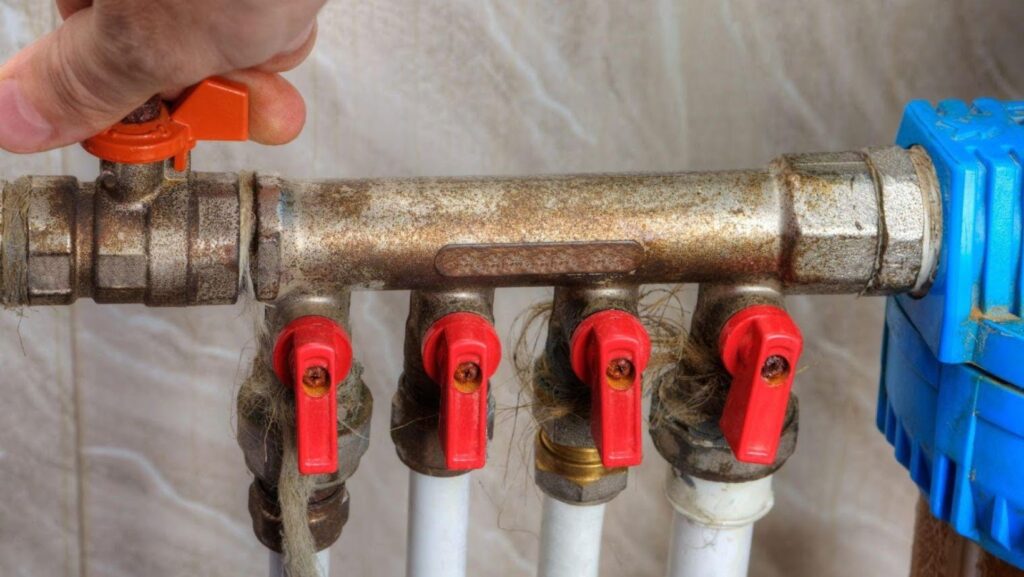
Plumbing emergencies can strike when least expected, causing immediate panic and extensive damage. Knowing how to turn off your water main during such crises is crucial for every homeowner. Water leaks and plumbing disasters pose real threats, leading to costly repairs and sometimes irreparable harm to your property. Acting promptly can minimise damage, potentially saving you thousands in repair costs. This essential guide for homeowners simplifies the process, ensuring you’re prepared for any eventuality.
Understanding the Basics of Your Water Main
The water main acts as the primary conduit through which water enters your home from the municipal supply. It’s arguably the most important part of any residential plumbing system. Typically, each home is equipped with a main shut-off valve, which controls the water flow into the property. This valve allows homeowners to completely stop the water supply, protecting the home from leaks and bursts.
The water main shut-off valve is usually situated in one of a few common areas. In many homes, you’ll find it in the basement, garage, or utility room. Sometimes, it is located outside the house, near the street where the water line enters your property. There are two main types of shut-off valves – those located inside and those positioned outside. Familiarising yourself with the location of your valve is vital and shouldn’t be postponed until a crisis occurs.
Signs You Need to Shut Off Your Water Main Immediately
Certain plumbing emergencies necessitate shutting off the main water supply without delay. Recognising these situations quickly can be critical. Major leaks or the sudden bursting of pipes are clear signs that urgent action is needed. If you notice unexplained puddles, a significant drop in water pressure, or alarming sounds from your pipes, it’s time to act.
Delaying action can lead to unwanted consequences, such as structural damage from prolonged exposure to moisture or the growth of mould in your walls and floors. Issues like a runaway toilet, uncontrolled spray from a broken faucet, or a continuously running water heater are also signs that can escalate if not addressed promptly.
Step-by-Step Guide to Turning Off Your Water Main
When a plumbing emergency strikes, initial preparation is key. It’s helpful to have a few items readily available – a torch for visibility, a wrench for turning the valve, and possibly a pair of gloves for protection.
1. Locate your water main shut-off valve, typically marked for visibility. If it’s outside, you may have to remove a protective cover.
2. Ensure you have ample lighting; using a torch can be particularly helpful if your basement or utility room lacks natural light.
3. Use the wrench to turn the valve clockwise until it stops. This action will halt the flow of water into your home.
4. Occasionally, valves can be hard to turn, especially if they haven’t been used in years. Apply gradual pressure to avoid damaging the valve or the pipe.
5. While turning off your water main, exercise caution. Be aware of any shifting items or unstable surfaces in the area you are working.
What to Do After Shutting Off the Water Main
Once the water main is off, your immediate priority is to minimise any resultant damage. Address leaks using towels, buckets, or other absorbent materials to contain excess water. For more significant flooding, contact a professional plumber to assess and repair the damage.
For smaller leaks, temporary fixes like pipe tape or clamps can help control the flow until a permanent repair is possible. It’s also wise to document any damages thoroughly with photos and detailed notes — this can be crucial for insurance claims.

Knowing what to do after shutting off the water can help you act decisively, reduce stress, and prevent further property damage. Take a moment to breathe and organise your next steps — you’re now in control of the situation.
Preventive Measures for Future Plumbing Crises
Preventing future plumbing emergencies starts with regular maintenance. Periodically check and update your plumbing system to ensure optimal functionality. Consider installing a water leak detection system, which provides early warnings of leaks, potentially averting future crises.
It’s also important to educate everyone in the household about the location and operation of the main shut-off valve. The more people equipped to handle an emergency, the better. In some cases, upgrading your home’s plumbing system can provide enhanced durability and resilience against potential failures.
Conclusion
Understanding how to turn off your water main during emergencies is a fundamental part of responsible homeownership. By preparing in advance, you can mitigate risks, protect your property, and gain peace of mind. Remember, the ability to act quickly during a plumbing crisis starts with familiarising yourself with your home’s plumbing layout. A stitch in time saves nine, so take this as a cue to equip your home and household well.



